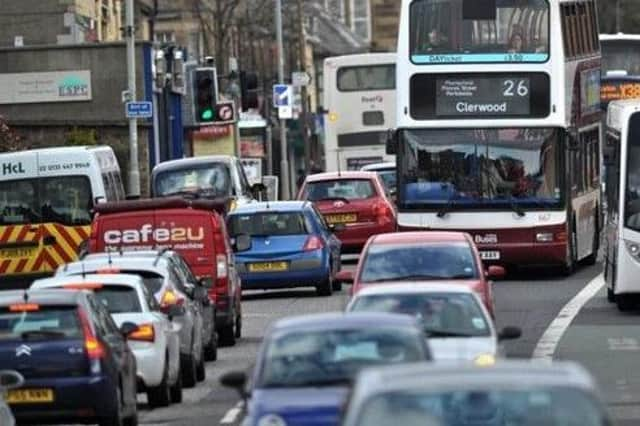Any pretence about Capital not being anti-car is finally gone - John McLellan


Having sat through more meetings than I care to recall when officers claimed less than persuasively their plans would bring nothing but benefits, and remembering happy-clappy councillors skipping down The Mound with children like the Pied Piper, this is some confession.
But for “additional pressure” read utter chaos, and no-one should be under any illusion that chaos is an intended consequence of the “Our Future Streets” circulation plan being discussed at today’s transport committee, not an unfortunate by-product.
Advertisement
Hide AdAdvertisement
Hide AdDrivers will learn to stay away by experiencing chaos; the hours of frustration sent sitting in queues, or trying to find circuitous routes for what used to be ten-minute trips, enough to render private cars useless for journeys through or to the city centre. Which is the goal.
The pretence about Edinburgh not being anti-car is finally gone, because the aim of cutting car journeys by 30 per cent in six years, when the population is growing, will not be achieved by anything other than the aggressive approach spelt out in the proposals.
“There is a high level of uncertainty in other impacts and these may not materialise to any significant extent,” says the report, when it’s glaringly obvious from every other initiative over the years that the impact will be immediate, considerable and widespread.
The key is that what is significant to an anti-car council transport officer is not the same as ordinary members of the public going about their normal business, little things like dropping off visiting relatives at Waverley station.
Advertisement
Hide AdAdvertisement
Hide AdExperience of the Spaces for People scheme, the pandemic Trojan Horse to introduce permanent road restrictions disguised as emergency measures, is that what politically motivated officials deem acceptable is at wide variance with the average citizen.
The report casually says that the closure of the Cowgate for work showed it was manageable, but that wasn’t accompanied with bans on traffic from the South Bridge or the Mound, and the simple truth of the plan is that Waverley will be virtually unreachable by private car, while taxis sit in jams.
Manageable in the minds of those behind this report is up to 600 vehicles an hour diverted to Queen Street, Lauriston Place and Melville Drive. Closing the Canongate will push another 300 vehicles an hour onto Queen Street, Holyrood Road and Melville Drive. Roadworks or an accident and it’s chaos squared.
Use the bus instead, like you’re supposed to? But cross-city services will be disrupted as well, as Waterloo Place and Castle Terrace will each be turned into a bus terminus to reduce the number of services using Princes Street.
Advertisement
Hide AdAdvertisement
Hide AdAnd for all this we’re expected to swallow claims it will produce £110 million of economic benefits because people will walk or cycle more. Maybe the calculation is based on buying more shoes.
Like the guff used to support Spaces for People, today’s paper claims there will be £310m of “wellbeing benefits” through a “greater sense of local community belonging and increased interaction with green spaces.” Really?
The frightening thing is that people getting paid six figure salaries at the council actually believe this tripe. And councillors elected to represent you will vote for it.
